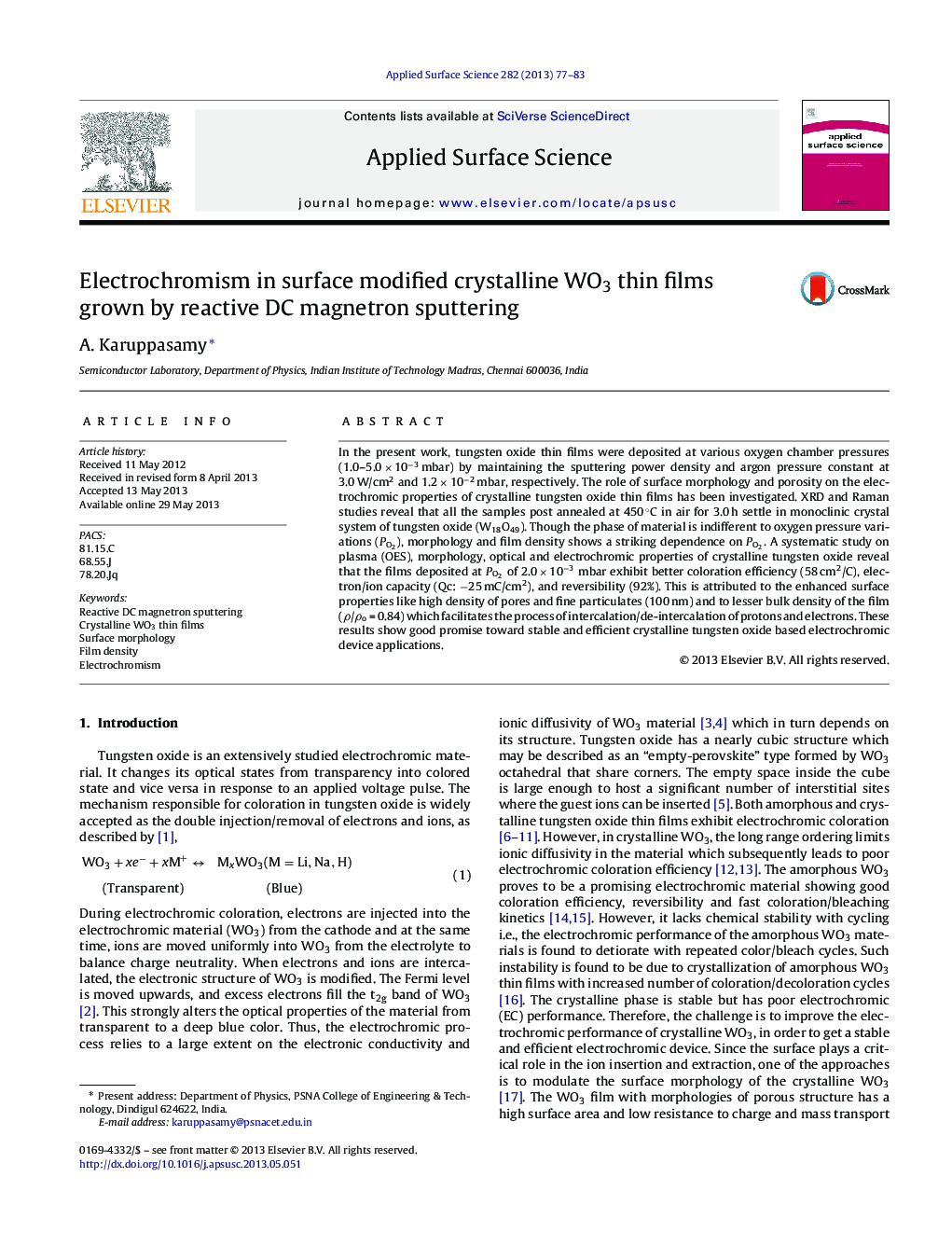| Article ID | Journal | Published Year | Pages | File Type |
|---|---|---|---|---|
| 5359670 | Applied Surface Science | 2013 | 7 Pages |
Abstract
In the present work, tungsten oxide thin films were deposited at various oxygen chamber pressures (1.0-5.0 Ã 10â3 mbar) by maintaining the sputtering power density and argon pressure constant at 3.0 W/cm2 and 1.2 Ã 10â2 mbar, respectively. The role of surface morphology and porosity on the electrochromic properties of crystalline tungsten oxide thin films has been investigated. XRD and Raman studies reveal that all the samples post annealed at 450 ÌC in air for 3.0 h settle in monoclinic crystal system of tungsten oxide (W18O49). Though the phase of material is indifferent to oxygen pressure variations (PO2), morphology and film density shows a striking dependence on PO2. A systematic study on plasma (OES), morphology, optical and electrochromic properties of crystalline tungsten oxide reveal that the films deposited at PO2 of 2.0 Ã 10â3 mbar exhibit better coloration efficiency (58 cm2/C), electron/ion capacity (Qc: â25 mC/cm2), and reversibility (92%). This is attributed to the enhanced surface properties like high density of pores and fine particulates (100 nm) and to lesser bulk density of the film (Ï/Ïo = 0.84) which facilitates the process of intercalation/de-intercalation of protons and electrons. These results show good promise toward stable and efficient crystalline tungsten oxide based electrochromic device applications.
Keywords
Related Topics
Physical Sciences and Engineering
Chemistry
Physical and Theoretical Chemistry
Authors
A. Karuppasamy,
